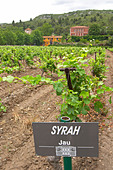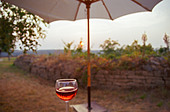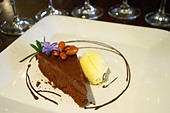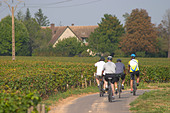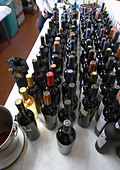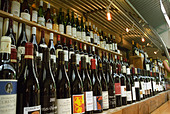 Sopexa, the French marketing agency for wine and other agricultural products, has conducted a big survey called the Wine Trade Monitor. The study is based on 1400 respondents in 16 countries. The survey will be repeated annually. It will be presented at Vinexpo in Bordeaux later in June but already today BKWine Brief can reveal some of the most interesting conclusions from the study (NB: it only covers still wine, no sparkling, no spirits):
Sopexa, the French marketing agency for wine and other agricultural products, has conducted a big survey called the Wine Trade Monitor. The study is based on 1400 respondents in 16 countries. The survey will be repeated annually. It will be presented at Vinexpo in Bordeaux later in June but already today BKWine Brief can reveal some of the most interesting conclusions from the study (NB: it only covers still wine, no sparkling, no spirits):
- The wine market in 2008: 51% of the respondents said they had a growth in wine sales in 2008 and 23% had stable sales. In other words 74% were stable or growing, in spite of crisis
- 2009: 48% were positive re sales in 2009
- But the optimism varies by country:
The optimists: China, Netherlands, India, Hong Kong, Belgium
Pessimists: Taiwan, Russia, Denmark, Switzerland, USA
- Rosé continues to be popular: 25% see an increase in demand. Big country differences here too:
Optimists: UK, Denmark, Netherlands, USA, Canada
Pessimists: China, Taiwan, Korea, Switzerland
- Three segments are seen as particularly interesting:
AOC/AOP/IGP wines
Varietal wines
Organic wines

- An impressive 25% see a positive evolution for organic wines. A high number, considering that it is a very small percentage of all wine that is organic. (Something like 2% if we’re not mistaken.)
- But the demand for the segments varies by market
AOC/AOP: Asia (in general), Denmark, Belgium, Canada (19+%)
Varietal wines: India, Singapore, Germany, USA, UK (45+%)
Organic: Canada, Japan, USA, Denmark, Netherlands (29+%)
- Comment: AOC/AOP wines should therefore not be seen as a loosing proposition compared to varietal wines. Rather, they are different and complementary segments. If you take into consideration the size of the respective markets varietal wines are ahead today (the %-figure indicate the size of the listed countries as part of total French exports, only major countries counted). Looking ahead AOC/AOP will probably gain in importance since the Asian markets are expected to grow more.
- Grape varieties:
Cabernet sauvignon and chardonnay: by far most popular (82% and 72% of respondents cited those)
Merlot, pinot noir, sauvignon blanc, and syrah are in a tight second group (44-59%)
Malbec, pinot gris, and riesling are also relatively well positioned (20-30%)
Potential niche varieties: tempranillo, grenache, chenin blanc
- Low alcohol wines: Wines with low or now alcohol was overall regarded as without market potential
-
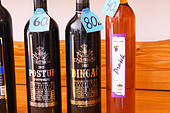 Price: low and mid-range dominate (71% and 67%) by far over premium and super premium (in terms of perceived demand), but with big country differences:
Price: low and mid-range dominate (71% and 67%) by far over premium and super premium (in terms of perceived demand), but with big country differences:
Low price countries: UK, USA, Canada, Singapore, Russia, and India
More premium oriented markets: China, Hong Kong, Singapore, Taiwan (apparently Singapore buys both cheap and expensive)
Some conclusions:
- Most interesting markets for French wines: China, Hong Kong (high potential for French wines as seen by respondents)
- Less interesting markets: UK, USA, Taiwan, Russia, Switzerland, Denmark (idem)
- French wine producers need to develop a greater offer of varietal wines (there is already a strong AOC/AOP offer, and this also has continued potential)
- Wine producers need to pay more attention to what the market (markets) are asking for
The report from Wine Trade Monitor study will be presented in detail at Vinexpo by Sopexa on June 24 – worth a visit if you’re in Bordeaux. More info:
www.e-sopexa.com
Read more...
